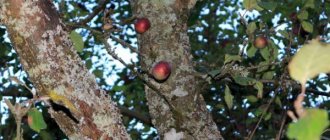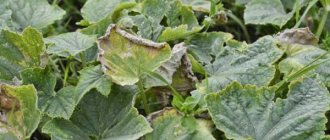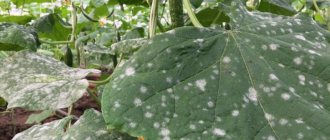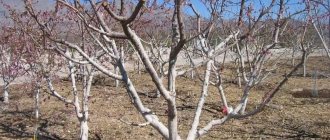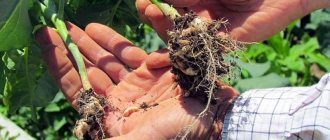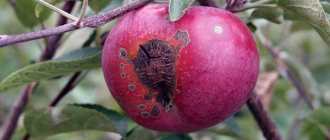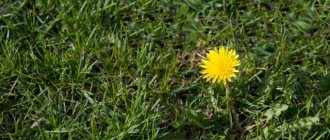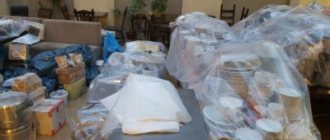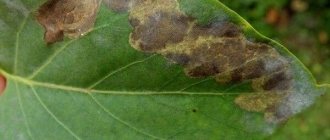Varieties and harmfulness of caterpillars
The process of appearance of worm-like larvae is simple - butterflies lay eggs on the back of leaves or on plant stems, from which caterpillars emerge.
The larvae remain in this form from several days to several years and constantly harm the plant. Depending on what the caterpillars feed on, they are divided into four groups:
- Polyphages - absorbing everything in their path and causing the greatest harm to plantings.
- Monophagous - feeding only on a specific plant.
- Oligophages - eating crops and fruits of one family.
- Xylophagous - destroying bark and wood.
Each group has its most dangerous representatives. Not all caterpillars pose a threat to agricultural crops, however, among them there are such serious parasites that can easily destroy the yield of some vegetables and fruits. The most harmful caterpillars on a summer cottage include the larvae of cabbage moths, cutworms, gypsy moths, lacewings, and leaf rollers. They differ in the type of food, size and color.
Black
Black caterpillars found in the garden can be harmless peacock moth larvae and dangerous larvae of the armyworm and gypsy moth. The offspring of the peacock's eye are frightening in appearance, but practically do not harm most country plants. Black larvae with long spines live mainly on weeds - nettles and thistles. They are less common on raspberry bushes.
In spring and early summer, large colonies of caterpillars can be seen hanging from plants in clusters. A large number of peacock eye larvae can cause damage to raspberry plantings, however, timely processing of berry bushes will help preserve the harvest.
More significant damage to plants is caused by the larvae of the warlike moth, a gray-brown moth-like moth. Black 4-centimeter polyphages can significantly reduce the yield of fruit trees and shrubs. This caterpillar is often found on sunflowers.
The voracious offspring of the gypsy moth can be recognized by their dark color with orange dots. These larvae grow up to 7 cm and eat flowers and leaves of apple trees. If caterpillars are found, they must be exterminated without delay, otherwise you may lose your apples.
Gray
Gray caterpillars with a greasy sheen, growing up to 5 cm, are the larvae of the moth. They appear in two stages, develop quickly over 5-10 days and are so insatiable that in just a few days they can completely deprive the plant of green leaves. The first stage caterpillars hatch from June to July and destroy seedlings of sugar beets, corn and sunflowers. The larvae of the second stage appear from August to September and parasitize mainly on vegetables - potatoes, beets, etc.
In one night, about 5 cutworm caterpillars can destroy a dozen plants.
Greens
Mostly green caterpillars are common in the country. From them appear cabbage whites, raspberry moths, cabbage cutworms, leaf rollers, and onion moths. The ones to be most wary of are female white moths, which lay several hundred eggs per season on cruciferous vegetables. Butterfly caterpillars are very aggressive and voracious; they quickly eat up plants, not allowing a head of cabbage to form, and then move to neighboring plantings.
Cabbage is attacked not only by white moth larvae, but also by cabbage cutworm. Cutworm caterpillars are difficult to detect - they feed mainly at night and hide during the day. Their presence can be judged by the holes on the leaves of vegetables. Another species of butterfly that is dangerous to plants is the leaf roller. Two-centimeter polyphagous larvae damage all fruit trees and berry bushes. They can be found on honeysuckle, currants, raspberries, apple trees and pears. If you find a small green worm on a tree, you must immediately treat the plant with a special product.
Onion moth caterpillars develop and parasitize garlic and onions. These tiny insects devour the leaves of bulbous plants, gnaw through the stalks, shoot tissue and penetrate the bulb, which leads to the inevitable death of the plant. Caterpillars that parasitize raspberries and currants, wild shrubs and trees turn into bright green raspberries. Fortunately for gardeners, these beautiful butterflies are quite rare in nature, so they are practically never found in summer cottages.
White
Pale, tiny whiteflies are a source of headaches for gardeners. A small insect systematically destroys a plant at all stages of its development. Larvae and adults of the butterfly feed on vegetable seedlings and leaves of fruit bushes, in particular red and black currants.
Whitish worms can be seen on tomatoes, cucumbers, and peppers. During the growing season of plants, several generations of whiteflies appear, causing significant damage to the crop.
Yellow
Yellow larvae hatch from the eggs of the corrosive woodworm. Caterpillars feed mainly on wood, infect the trunk of plants with bacteria, and gnaw tunnels in the trunk and stem. As a result of the parasitic activity of caterpillars, plant branches become fragile and brittle.
Apple glass caterpillar
In addition to woodworms, xylophages include the offspring of the glass butterfly, which causes serious damage to garden trees. The larvae hatching from eggs laid in the bark gnaw passages in the trunk of the plant, which also disrupts the circulation of sap. Despite their name, glassworm caterpillars also parasitize plums and pears. If you spray the plants in a timely manner immediately after flowering, you can get rid of glass larvae for a long time.
Codling moth caterpillar
There is an opinion among summer residents that for every fruit there is its own codling moth. Apple, plum, pear and barberry trees fall under the attack of butterflies. The larvae of apple and plum moths are the most insidious, as they are oligophages. The danger of codling moth caterpillars is that they damage fruits and young leaves of shoots, causing the entire shoot to die. The worms penetrate the fruits, chew them out from the inside, and then move on to another untouched fruit.
Multi-colored bright caterpillars
Colored hawthorn and lacewing caterpillars pose a serious threat to agricultural crops. The shaggy gray-orange hawthorn caterpillar prefers to parasitize pink-flowered plants - apple trees, rose hips, almonds, and cherries. In a short time, it gnaws out buds, buds and leaves.
Large four-centimeter lacewing caterpillars, attracting attention with their red color with bright orange speckles, are dangerous not only for plants, but also for living beings. The hairs covering the caterpillar's body can cause an allergy attack or cause a burn to the skin.
Types of pests
Black and red currants are very loved by hordes of pests that destroy the green mass, damage the berries and dry out the shoots. Each insect requires its own approach. Many appear in early spring, others eat leaves throughout the season. beautiful bright butterflies leave clutches on the bushes. The eggs develop into larvae, which require a lot of food to grow and develop.
Caterpillars can completely destroy a bush in 2 weeks
What pests are most dangerous to plants:
- The bud moth has gray wings with fringed edges. This is a small butterfly, reaching a length of 17 millimeters. Individuals lay eggs in swelling buds, which begin to change appearance. Moth larvae overwinter under the bark of shoots, and with the onset of warm weather they rise upward. From the beginning of development until pupation, the caterpillar changes color from red to green.
- The gray, inconspicuous butterfly is called the gooseberry moth. She leaves larvae in flowers. Small caterpillars feed on fruits. They also produce a web that hides the berries. The larvae spend the winter in the soil, so they are easier to fight than bud moths.
- Gall midges are mosquito-like insects. They damage not only the leaves, but also the trunks of the plant, forming swellings on them. The insect prefers black currants. White caterpillars change color to bright scarlet as they grow. The larvae spend the winter in the soil under fruit bushes.
- Green caterpillars of the gooseberry sawfly eat the leaves, leaving only the veins. Three generations of the pest can hatch in a season. In large numbers, caterpillars can completely destroy bushes. The sawfly eats mainly red currants. In winter, it leaves larvae in the soil.
- The leaf roller damages the leaves because it lays eggs on them. The caterpillars completely eat the shoots, use a web to create a cocoon of leaves and continue to develop inside, drinking the juice. We get rid of this pest by spraying with special preparations or tearing off the affected tubes.
- The gooseberry moth is a very attractive yellow butterfly. It is dangerous for all fruit plants. Eggs are laid on leaves. Most often, the moth settles on red currants. Having eaten the young leaves, the caterpillars pupate and again leave behind larvae.
- The most dangerous pest is currant glass. Its larvae develop inside the shoots and eat them from the inside. Masonry is made in cracks in the bark. The caterpillars reach the root system and destroy the bush.
The glass can be destroyed only during the period of pupation, which occurs in the soil. You need to loosen the soil around the bush, add ash to it, and sprinkle with tobacco dust. You can also trim and burn damaged shoots.
Also dangerous for currants are aphids, which damage the tops of the shoots. The leaves curl and the fruits do not have time to develop.
What do caterpillars and their larvae eat?
The caterpillar, hatched from the egg, first of all eats its shell, inside which it developed. Most of these creatures are herbivores; they feed on leaves and plant fruits. But there are also predators that eat sedentary insects, scale insects. Unlike butterflies, these insects eat solid food and therefore have strong gnawing jaws. The upper jaw is more powerful; there are teeth with which it chews food.
Insects consume leaves in such a way that it is easy to determine which larvae fed there. Small-sized individuals gnaw only the upper or lower part of the leaf. They leave transparent slits of intact thin skin.
Due to the fact that the hatched larvae immediately begin to feed heavily, the integument, which does not stretch, soon becomes small. The insect is forced to stop feeding for a while and shed its skin. During its life, the caterpillar molts 4-5 times.
Classification of larvae
The digestive tract of these creatures is concentrated at the back and front of the body. This helps you digest food calmly even while moving. Their digestive tract secretes enzymes that help them process food easily. Scientists classify the larvae depending on what the caterpillar eats.
Polyphages - eat plants
These insects are polyphagous, as they consume any plant for food, indiscriminately. These include moths (moth, wine hawk moth, peacock eye). The advantage of polyphages is that they exist with an unstable food supply. Weakness: poor digestion of food.
Oligophagous - eat plants of a certain type
They prefer to eat one type of plant, one family or type, and do not allow mixing. These include the polyxena species, which feeds only on some of the genus Kirkazon, and the Mahayana larvae only on celery. Or the codling moth, which eats apples and plums.
Monophagous - eat a strictly specific type of plant
These are the most selective individuals who prefer to eat one type of plant. An example is the silkworm larva, which eats only mulberries.
Xylophages - eat wood
Wood is the only thing the caterpillar of this species feeds on. Xylophages make up a minority, compared to other species, their number is insignificant. They gnaw tunnels in tree trunks and branches. The roots of herbaceous plants can act as food due to their woody composition.
Fighting the leaf roller: what and when to spray against caterpillars on an apple tree
The leaf roller is a green, voracious caterpillar. It wraps itself in the leaves of the plant, pupates and turns into a butterfly. It feeds mainly on leaves and buds, sometimes damaging fruits. Caterpillars live alone.
The leaf roller butterfly does not harm the tree. However, one individual lays up to 60 eggs per season, from which caterpillars hatch within two weeks. Most often, the leaf roller attacks young trees. The leaves on it look like a tube. The more affected leaves, the worse photosynthesis.
Basic methods of pest control
To combat voracious caterpillars, gardeners resort to chemical and folk remedies that work quickly and reliably. However, during flowering and fruiting of agricultural crops, the larvae should be collected by hand, although this is a long and labor-intensive process.
Folk remedies
Despite the fact that many pest control chemicals are now sold on the garden and summer cottage market, farmers still prefer to destroy insects using ecological folk methods. Such products repel butterflies and destroy caterpillars, and most importantly, do not harm plants.
Chamomile infusion
This is a simple but effective remedy. 1 kg of dried chamomile flowers is added to 10 liters of water, then boiled. Afterwards, the product is infused for 12 hours and filtered. Next, the concentrate is mixed with water in a ratio of 1:3, respectively. The affected plants are sprayed with chamomile infusion. You can enhance the effect if you rub a piece of laundry soap into the liquid before use.
Red elderberry
The stems and leaves of the tree are used for the decoction. The raw materials (200 grams) are crushed and 10 liters of hot boiled water are poured. The mixture is infused for a day, then it is filtered. After this, you can spray the tree.
Red pepper
A decoction of hot peppers will help get rid of caterpillars. You need to take 1 kg of vegetables and cut each product into two parts. Next, you need to fill the raw material with 10 liters of cold water and boil everything for an hour. Then leave for a day. The mixture is stored in the refrigerator, and the tree is sprayed with a non-concentrated liquid. 12 g of pepper broth is diluted in 10 liters of water. The plant is treated with this composition.
Vinegar solution
There is no need to boil anything. Dissolve 200 g of vinegar in 10 liters of water, mix thoroughly and treat plants affected by pests. This method works best for flowers.
Onion peel
An infusion of onion peels is the best remedy for caterpillars on cabbage. A liter glass jar must be filled with husks, then transfer the ingredient to another vessel and fill with two liters of water. The composition should be infused for a day or two. After this, add enough water to make 4 liters of product in total. Finally, you need to strain, add grated laundry soap (25 g) and spray the plant.
Burdock leaves
The burdock leaves must first be chopped. Then they are transferred to a bucket to fill half the vessel and filled to the top with water. Everything is infused for 2-3 days. The mixture is filtered, and then you can proceed to spraying the affected tree. To enhance the effect, you can add laundry soap (25 g).
Tomato/potato tops
Potato or tomato tops are a simple and reliable means of fighting caterpillars. The ingredients are crushed, then they are placed in a bucket to fill it halfway. Next, the vessel is completely filled with water, everything is transferred to another container and boiled for one hour. After this, the composition must be filtered and diluted with clean water in a ratio of 1:5, respectively. Then you can spray the crops that have been attacked by the caterpillars.
Pepper Knotweed
For preparation you need 1 kg of flowering plant stems. First of all, they need to be crushed, then pour 10 liters of boiled water and leave for 24 hours, tightly covering the container with a lid. After the time has passed, the composition is filtered and is considered ready for spraying the tree.
Soda
Treating vegetables with baking soda can easily and cheaply get rid of larvae. Sodium bicarbonate is commonly used to control cabbage head pests.
This substance can be used in two ways:
- you can spray the cabbage with a solution prepared on the basis of soda (add 5 tablespoons of soda to 1 liter of water);
- or thoroughly sprinkle the heads of cabbage with dry powder.
Advice! In order for the soda powder to last better on the crops, it is advisable to carry out the work in the morning, then the substance will mix with dew and stick to the plants.
Tobacco and soap
It is known that nicotine causes fear in insects and, in large doses, paralysis, so many gardeners use a solution of tobacco and soap to repel pests. To prepare the product, you need to dilute 400 g of tobacco powder in ten liters of water and let the solution brew. About 50 g of liquid soap is added to the finished liquid to make the product more sticky and stick better to the plant.
Infusion and decoction of tomato tops
Thanks to the substances contained in tomato tops, it can be used as a natural antiseptic and poison for most pests. You can make an infusion or decoction from green tomatoes.
- The infusion is prepared from 2 kg of tops, which is poured with 5 liters of hot water and infused for about 4 hours. After this, the liquid is boiled for 2 to 3 hours, filtered and water is added in a ratio of 1:2;
- the decoction is prepared from 4 kg of tops. The greens are poured with 10 liters of water and boiled for 30 minutes. Then the resulting product is filtered and diluted with water in a ratio of 1:4. Gardeners recommend adding a little liquid soap to the broth for stickiness.
Sagebrush
One of the oldest remedies for caterpillars is wormwood. The essential oils contained in this weed repel many pests. Gardeners use dried brooms of this plant in vegetable beds, and treat the fruits with a wormwood-based solution. To prepare the decoction, soak 7 tablespoons of the weed in a liter of water and let the liquid brew for several hours.
Celandine
Another weed that helps rid the garden of pests is celandine. The plant is used in powder or infusion form. The ground under the crop is treated with powder, and the fruit is sprayed with a liquid substance.
To prepare the solution, soak 3-4 kg of herbs in a bucket of warm water and keep the infusion for about two days in a dark room. Then the finished product is filtered and poured into containers for spraying.
Chamomile in the fight against caterpillars
If you have a place where you can collect field chamomile, then you should also use this. The collected plants should be dried. Then chop the flowers and leaves. Pour 100 grams of chamomile with 1 liter of water. The next day, the infusion should be filtered and diluted with water (1:5). Add 50 grams of liquid soap to a bucket of infusion to make the infusion easier to apply on the leaves.
Birch tar with soap
A reliable and safe product used in gardening is birch tar. Paraffin resins contained in tar repel insects and have a healing effect on plants. For treating bushes and trees, the substance is not used in its pure form. It is mixed with water and soap. The resulting mixture is used to treat plants before the first leaves and flowers appear.
Tomato greens from caterpillars
It is worth remembering that caterpillars do not like green tomatoes. She is dangerous for them. So the caterpillars try to bypass it on the tenth road. And we should take advantage of this accordingly. Once you have harvested your tomatoes (meaning the tomatoes will no longer bear fruit), collect the tops. Place it in the shade to dry. Immediately before use, cut the dried tops into small pieces. Fill the bucket to the top with chopped tops. Fill it with water and boil for about half an hour. The tops should boil well. Then dilute the decoction (2 liters) with water (10 liters). Add 40 grams of soap to this mass so that the resulting solution can be easily applied to the leaves and stems of trees and plants, which provide the greatest delicacy for caterpillars.
Fumigation
To eliminate caterpillars in this way, you need to put hot coals in a heat-resistant container and add resin and sulfur in a 2:1 ratio, respectively. After this, you should walk around the affected crops and fumigate the parts that you can reach with smoke. It is very important that there is no wind outside during the procedure, otherwise everything is pointless.
All folk remedies are good in their own way. You can achieve the desired result and get rid of pests using these methods, and preparing the mixtures is incredibly simple.
Digging a ditch for caterpillars
Also, to protect the garden area from caterpillars, you can make a not very deep and not very wide ditch around it. True, this method will only help against crawling caterpillars. They simply will not be able to overcome such an obstacle and will gather in this trench; you just need to destroy them in a timely manner. But you will have to check the groove every day.
Pruning branches helps against caterpillars
Do not neglect pruning the branches of bushes and trees, since caterpillars and other pests love dense, dark crowns, where the conditions are most suitable for them. If you do the pruning correctly and on time, this will not happen.
Strong odors - repelling caterpillars
And finally, caterpillars and other pests do not like strong odors, so, among other things, you can plant herbs (for example, dill, parsley, garlic or others) on the site. They also do not like the smell of nightshades (the same tomatoes and tobacco, eggplant, potatoes and others).
Chemicals against caterpillars
The problem can be quickly and radically solved with the help of pesticides - after 1-2 hours after treatment, most of the caterpillars will die.
However, the use of chemistry has many side effects :
- not only pests will suffer, but also other living organisms, and the local ecosystem may be disrupted;
- adult individuals are less sensitive to poisons than young larvae, so, most likely, you will have to spray the plants with poison again;
- pesticides can be harmful to humans - it is necessary to adhere to safety rules when processing;
- poisons cannot be used less than a month before harvest.
Chemical treatment is carried out in calm weather using personal protective equipment
When deciding to purchase a chemical pest control product, pay attention to the degree of danger it poses to people, pets and bees. A drug whose packaging says hazard class 1 or 2 should not be used in a summer cottage.
Among the most popular (and least dangerous) chemicals are: Fufanon, Kemifos, Antitlin-P and Grinda.
Biological products such as Bitoxibacillin, Fitoverm, Nemabakt, Lepidotsid, Dendrobacillin and Entobacterin-3 will also help to successfully get rid of caterpillars on cabbage. They contain live bacteria that kill pests. The use of drugs of this type allows you to fight cabbage parasites with minimal negative consequences for humans, pets and beneficial insects.
Typification and principle of action of drugs against caterpillars
To combat insects, insecticides are used - chemical substances that are applied in various ways to those parts of plants and trees where the caterpillars are located.
According to their effect on the pest organism, they are divided into:
- contact;
- intestinal;
- systemic.
This division is somewhat simplified, since scientists distinguish other subtypes - for example, translaminar. Such insecticides penetrate into the leaf blades, which are then eaten by the caterpillar. Entomologists also often define the first two types of pesticides using the same term “contact-intestinal.”
There are also continuous and selective insecticides. The former infect various types of caterpillars, and other garden pests too. The latter are deadly only for certain species.
When choosing a remedy for caterpillars, you need to carefully study the instructions and take into account all factors - for example, the phase of plant development, special weather conditions, the presence of water bodies and apiaries near water bodies, etc. This will help avoid unwanted environmental consequences.
These drugs are also classified according to their active basis. Groups of pesticides can be based on pyrethrins, avermectins and other substances.
Contact
They act on the pest very quickly, but on a limited local part of the plant or tree. The effectiveness of the poison is significantly reduced in rainy weather: precipitation reduces the concentration of the substance or completely washes it off. And then you need to start processing all over again.
If the weather is bad in the summer, sometimes you have to poison the caterpillars with contact preparations again after each rain.
Intestinal
Together with plant particles, after being eaten, they enter the body of the caterpillar, where they begin to act, leading to death.
System
The peculiarity of preparations of this type is that, being applied to the surface (leaves, stems, tree trunks, etc.), they penetrate inside and move along with the sap of the plant, penetrating into all its parts. This application ensures widespread destruction of caterpillars. In addition, this method of struggle is very effective, since no external influences can reduce its effectiveness.
When the chemical is inside the crop, it will not be washed away by rain, nor blown away by the wind after drying, nor will it be decomposed by ultraviolet rays of the sun.
Rating of industrially produced anti-caterpillar drugs
The purpose of any poison is to destroy the pest insect. Below is a rating of drugs that cope with this task best. You need to choose them depending on the type of plants being grown.
"Intavir"
“Intavir” is a contact-intestinal insecticide. Its active ingredient is cypermethrin. The poison is suitable for garden crops, as well as indoor trees and flowers. “Intavir” dissolves in water and is available in the form of powder and tablets. 1 tablet is enough for 10 liters of water.
It is necessary to treat garden and vegetable crops with this preparation only in dry and windless weather. In addition, you should not spray trees and other plantings with this poison near rivers and lakes. It is also not recommended to spray plants while they are flowering, otherwise the bees will eat the poison and die.
“Intavir” is used when the degree of damage to plants by caterpillars is high. In other cases, it is better to use more gentle methods.
“Tanrek”
The drug for caterpillars “Tanrek” is a contact-intestinal drug and belongs to neonicotinoids. It can be used to process apple trees and currant bushes, as well as tomatoes, bell peppers and potatoes.
The product itself is available in the form of bottles and ampoules. The solution is prepared at the rate of 3 ml of product per 10 liters of water for trees, or 1 ml per 10 liters of water for other plants. The drug must be used immediately after dilution, otherwise the poison will lose its properties.
“Tanrek” can be used near bodies of water, but during the flowering period of plants it cannot be used, as it is dangerous for bees.
“Fufanon”
This poison is created on the basis of organophosphorus compounds. Previously, “Fufafon” was used everywhere. However, WHO has banned the use of this drug on food crops.
The poison is produced in ampoules and vials. This is a contact-intestinal drug that affects all types of insects, even those that can camouflage themselves well. It is diluted at the rate of 5 ml per 6 liters of water. It can also be used as a fumigation agent.
“Fufanon” can be used to treat shrubs, peppers and tomatoes. You can also spray it on trees - pear, quince, cherry and apple trees.
“Karbofos”
“Karbofos” is the most effective drug that has a strong effect on all living things. Its main active ingredient is malathion. This product is available in the form of powder, granules, tablets and emulsion.
“Karbofos” is a contact preparation that can be used to treat many fruit trees and flowers. The concentration of the poison is calculated based on the area of treatment and the type of crop.
Remember that when working with this drug it is important to exercise extreme caution, as it is very toxic!
“Iskra-M”
This product is also organophosphorus, so it is used to treat gardens, orchards and even forests. The product contains potassium fertilizer, which has a positive effect on green spaces.
“Iskra-M” is produced in the form of ampoules and diluted at the rate of 5 ml per 1 liter of water. It is better to spray plants with poison in the early morning or evening.
“Golden spark”
This drug is complex and destroys caterpillars on almost all types of plants. Its distinctive feature is that it does not lose its properties even in dry and hot weather. Therefore, the poison can be used in hot regions with arid climates.
“Spark of Gold” is not addictive to insects, so it does not need to be alternated with other means. It is available in bottles and ampoules. The poison should be diluted at the rate of 1 ml per 5 liters of water. This is enough to spray 1 hectare of land.
“Iskra-bio”
Another name for the drug is “Akarin”. It can be used 2-3 days before harvest. The dosage is indicated on the poison packaging depending on the type of crop. The product itself is universal.
“Spark Double Effect”
This drug contains two active ingredients - cypermethrin and permethrin. Like all products with this name, it contains potassium to fertilize plants.
The poison is available in the form of tablets that must be dissolved in water. 1 tablet is for 10 liters of water.
Fighting with chemicals
It is also possible to fight caterpillars with the help of chemicals. Purchased products will bring the desired effect many times faster, but they should be used very carefully, strictly following the instructions on the packaging. Modern drugs defeat parasites very quickly, coping with large populations.
Chemicals are available in tablets, ampoules and powders. Usually, to treat a planted area of 50 square meters, one tablet, ampoule or pack of powder, which is diluted in 7-12 liters of water, is enough. It is not recommended to often use the same product in the fight against caterpillars, because the parasites develop immunity to it. To be effective, medications must be changed.
Chemicals have a limited shelf life. You can get rid of caterpillars with their help at least two weeks before the harvest. It is better to process crops a month before harvest. Otherwise, eating fruits (cabbage, potatoes, peppers, tomatoes, etc.) is prohibited, since insecticides are dangerous to the human body.
Chemicals can be of three types:
- contact (they protect only those parts of the crop that have been processed; they act quite quickly, but a significant disadvantage is that they are washed off by rain);
- intestinal (the point is that such agents enter the insect’s body with food and destroy the parasite from the inside);
- systemic (affect pests differently).
The most popular insecticides are:
- "Inta-Vir" is a broad-spectrum drug that is not recommended for use during plant flowering, since it destroys beneficial insects (as well as aquatic inhabitants).
- Iskra M is not recommended for use near water sources. The effect will last for about two weeks.
- “Monsoon” is a broad-spectrum product that will be equally effective at any time of the year, since it is resistant to temperature fluctuations. The effect of use lasts 15-30 days.
- "Senpai" acts by contact and is dangerous for bees, so it should not be used during the flowering period of plants. Trees and other crops will be safe for two weeks.
- "Lepidotsid" is a drug based on bacteria. With its help you can get rid of caterpillars both in the garden and in the garden. It should be applied at intervals of 7-8 days during the rainy season.
- “Bitoxibacillin” is also made from bacteria. It will eliminate parasites from fruit, flower, vegetable and ornamental crops. It is necessary to treat the plants with the product once every 7-8 days, especially in the summer, since it is at this time that the parasites are most numerous. Valid for 2-3 weeks.
Also popular are “Aktara”, “Fufanon”, “Karate”, “Taran”, “Karbofos”, “Rovikurt”, “Fas”, “Molniya”. Chemicals will help eliminate the caterpillars, making the plants healthy and fertile.
Selecting a drug
In previous years, for each crop it was necessary to look for “its own” remedy or use toxic chemicals like DDT that would kill all living things. Modern agrochemistry is following the difficult but necessary path of creating universal drugs to combat caterpillars.
Caterpillars on coniferous trees, how to fight with folk remedies and medications, read more in this article.
For open ground
Modern insecticides can be used both for the garden and indoor soil. It is necessary to take into account the degree of damage by caterpillars and the type of crop. It is better to take funds that do not depend on weather conditions.
For garden
Preparations for caterpillars on trees are selected depending on the type of pest. Application method: spraying only. The toxicity class is taken into account so that bees are not harmed during the pollination period.
Caterpillars on viburnum: what to spray and how to fight the pest, read more in the article here.
For greenhouses and greenhouses
Suitable substances are those that can quickly evaporate or be washed away by rain in open areas. No such trouble is expected here. But we take into account the closed space and the danger of working in a high concentration of toxic chemical vapors.
For preventive treatments
To avoid caterpillar infestations, treat the area or greenhouse at the end of the season and before it begins. Spraying is combined with treatment of hard-to-reach places where the pest can lay eggs over the winter. Many people prefer folk remedies to chemicals - hot peppers, infusions of wormwood and celandine, soda solution.
Effective preparations and folk remedies for treating fruit trees against caterpillars
Proper selection and use of a remedy for caterpillars is half the success in the fight for the harvest. The sooner the pest is noticed, the fewer drugs are used, and, consequently, the cleaner both the crops and the soil will be.
Who weaves webs in trees?
Various insects are capable of creating webs in the garden.
Summer pests
The spider mite is a very small insect, whose body length is no more than 1 mm. The web that he weaves is a cloudy translucent film with dark grains of sand inside - these are eggs.
The main source of food for spider mites is plant sap, which it sucks from young shoots, leaves and buds. This creature does not pose a direct danger to humans, however, given the peculiarities of its existence, we can say with confidence that it is a rather serious pest of fruit and berry crops. In the process of feeding, spider mites deprive plants of important substances, which is why they lose vitality and gradually dry out.
Having settled on a tree, the spider mite begins to entangle first the leaves and then entire branches with its web. The females lay eggs right on it and after some time, voracious larvae emerge from the eggs. The young growth attaches itself to the plant and takes away the nutritious juices. Curled leaves appear on infected branches, which quickly dry out and fall off.
But the spider mite is far from the only pest of fruit trees that entangles them in its web. In addition to it, garden crops in the warm season are capable of attacking:
- apple moth;
- slowpoke;
- cocoon worms;
- Volyanka;
- leaf rollers;
- scoops;
- moths;
- corydalis.
The main damage is caused by caterpillars, and they are the main creators of thick and dense cobwebs on trees, which outwardly may look like lumps of cotton wool. Adults of these insects are winged - they do not pose a particular threat to plants, but at the same time they reproduce very actively and quickly increase the size of the colony.
On a note! The web that appears on trees as a result of the vital activity of sap-sucking and leaf-eating parasites is the main source of the development of pathogenic fungi!
The caterpillars themselves live in dense cocoons made of cobwebs formed on trees, and only one can contain a fairly large colony of parasites. Such pests include the ermine moth, which at the end of the last century was able to destroy quite a large number of bird cherry trees in the Moscow region.
Winter pests
You can find cobwebs on fruit trees not only in the warm season, but even in the cold season. The pest that weaves it is called hawthorn. When infected, white dense cocoons hang directly on the branches of various fruit trees. In this case, caterpillars are also harmful. They twist the leaves, entangle them in a dense layer of cobwebs and hibernate right inside them.
Allies in the fight for the harvest
Natural enemies of butterflies and their larvae can provide invaluable assistance in the fight against parasites. Practice shows that using such allies, up to 90% of cabbage pests can be destroyed.
Among these assistants, the most effective are:
- birds - swallows, tits, sparrows are good at catching butterflies, and starlings, rooks, thrushes and cuckoos (the only bird that is not afraid of poisonous caterpillars) willingly eat the larvae. Some gardeners recommend using chickens, but in addition to caterpillars, they will also peck young plants;
- amphibians - primarily frogs and toads;
- reptiles - lizards;
- insects - wasps, praying mantises, ground beetles, grasshoppers, nematode worms, etc. Particular assistance in the fight against cabbage whites is provided by the apanteles parasite, which lays its larvae in the body of the cabbage white caterpillar. The larvae, feeding on the fat and lymph of the caterpillars, immobilize and kill them within 8-12 days. Trichogramma vulgaris (egg eater), which lays its eggs in the eggs of the pest, is effectively used against cutworms and moths.
The diet of toads and frogs includes not only winged insects, but also worms with caterpillars
We identify a pest by appearance: how to understand the species
To choose the right drug or folk remedy against the caterpillar, you need to know the enemy by sight. There are a huge number of species of butterflies that lay eggs, and each caterpillar of its own species has characteristic features. For ease of understanding, we will conditionally divide pests by color.
Black
There are few species of black caterpillars that attack apple trees. The most notable and noticeable is the gypsy moth caterpillar . This is a large, hairy caterpillar about 7 cm long. The body is black with red dots and yellow longitudinal stripes. She eats foliage, flowers and ovaries.
Small black caterpillars with yellow longitudinal stripes on the body and white short hairs are the caterpillars of the hawthorn butterfly . They often weave webs. Damage to foliage is also typical - they eat only the flesh of the leaf, without affecting the veins.
Gray
Of the gray caterpillars, the most common raider on the apple tree is the ringed silkworm caterpillar . She has a bluish-gray body with narrow longitudinal stripes on her back - white in the center, then orange and black. The body is covered with short orange fluff. The activity of these pests is mainly nocturnal; during the day they sleep in spider cocoons.
Greens
Small, bright green moth caterpillars have thin white longitudinal stripes on their backs. They feed on leaves, flowers and ovaries, forming a sticky web as a waste product, which they use to twist the leaves.
Small dense green caterpillars, darker near the head section - these are leaf rollers . They also feed on all parts of the plant and roll the leaves into a tube before pupating. They easily damage young leaf buds and therefore require quick destruction.
White
White or yellowish-white, with black dots all over their bodies, dense caterpillars of the corrosive woodworm live in thin branches and bark of trees. Its presence can be determined by the large entrance on the bark and long corridors, inside of which the pests themselves can sometimes be found. They are dangerous because they are practically invisible to the eye.
Yellow
Yellow apple moth form nesting colonies. They reproduce several times per season. These are small yellowish worms that use a web to weave a nest of leaves.
Codling moth caterpillar
Codling moths are one of the most dangerous pests. They live in the soil and in the bark of a tree, and closer to fruiting they make their way inside the fruit and eat the pulp and seeds. They look like dense small caterpillars with an orange head, a dark head end and a light, almost white tail.
Apple glass caterpillar
Very small, up to 2 cm long, white worms with a bright red orange head. Only apple crops are affected. They live under the upper layer of the bark, making passages in it. The branches damaged by them quickly die, and black voids are found inside such branches.
Preventive measures: how to protect your garden from caterpillar invasion
Pest control will be much more difficult if preventive measures are not taken in time. Many problems can be avoided thanks to a few simple operations:
- after harvesting, thoroughly clean the garden and remove all remaining debris - tops, roots and other plant debris, take it away or burn it;
- dig the soil to a depth of at least 14 cm, use agrofibre;
- If there are areas with wild grass near your garden, treat them regularly - mow the grass, pull out flowering plants, etc. (Pay special attention to common wild plants of the cruciferous family (colc, shepherd's purse, etc.). They have common pests with cabbage, and must be destroyed first);
- feed the birds in winter to attract them to the garden;
- Think in advance about protective plantings of spicy and fragrant plants.
The appearance of caterpillars in cabbage beds is a nuisance, the elimination of which can take a lot of effort and time, but the opportunity to get a rich harvest of delicious vegetables is worth it. Everyone can choose the best way to get rid of caterpillars, from expensive chemicals to simple improvised means.
Fighting caterpillars: the most effective methods and recommendations
- View the full image
Caterpillar pests
The most common caterpillar pests
Methods of getting rid of caterpillars using chemicals
Traditional methods
Folk remedies against caterpillars on the site
Pest prevention
A beautiful, well-groomed plot with fruit-bearing trees and vegetable crops is the result of the long and painstaking work of each summer resident. But if you lose your vigilance even a little, caterpillars may appear and reduce all your efforts to zero.
Video
We invite you to watch videos from which you can learn how to effectively protect cabbage from pests without any “chemicals”, using traditional methods, as well as familiarize yourself with original recipes:
Sources
- https://ogorod365.com/borba-s-gusenitsami-v-sadu-i-na-ogorode-kak-izbavitsya-preparaty/
- https://dezplan.ru/vopros/chem-pitayutsya-gusenicy
- https://GdeKlop.ru/babochki/obrabotat-kusty/
- https://love-dacha.ru/narodnyye-metody-bor-by-s-gusenitsami/
- https://sadik-i-ogorod.ru/zashhita-rastenij/vrediteli/metody-borby-s-gusenicami/
- https://ogorodum.ru/kak-izbavitsja-ot-gusenic-na-kapuste.html
- https://GdeKlop.ru/babochki/sredstvo-ot-gusenits/
- https://pest-destroy.ru/sadovodam/preparaty-pomogayushhie-izbavitsya-ot-gusenicz-na-derevyah/
[collapse]
